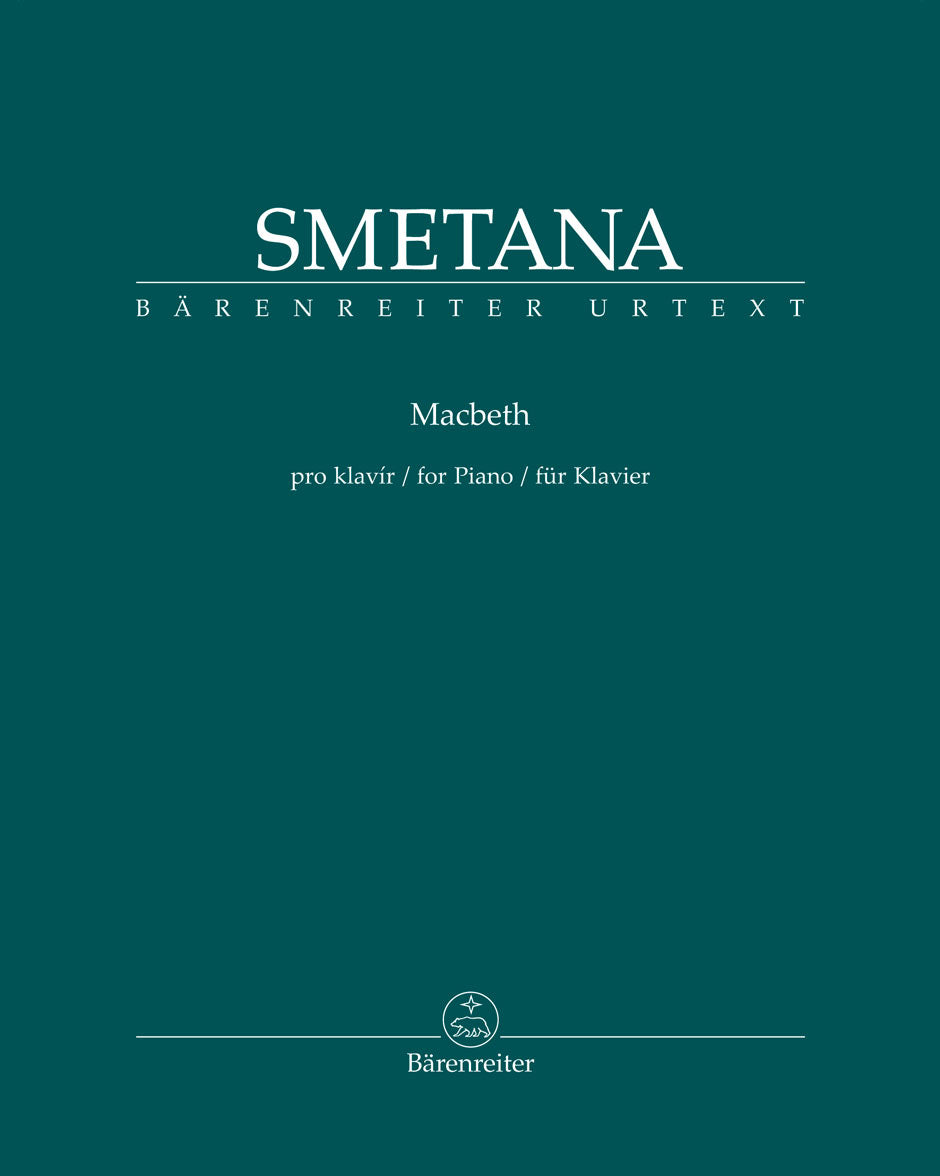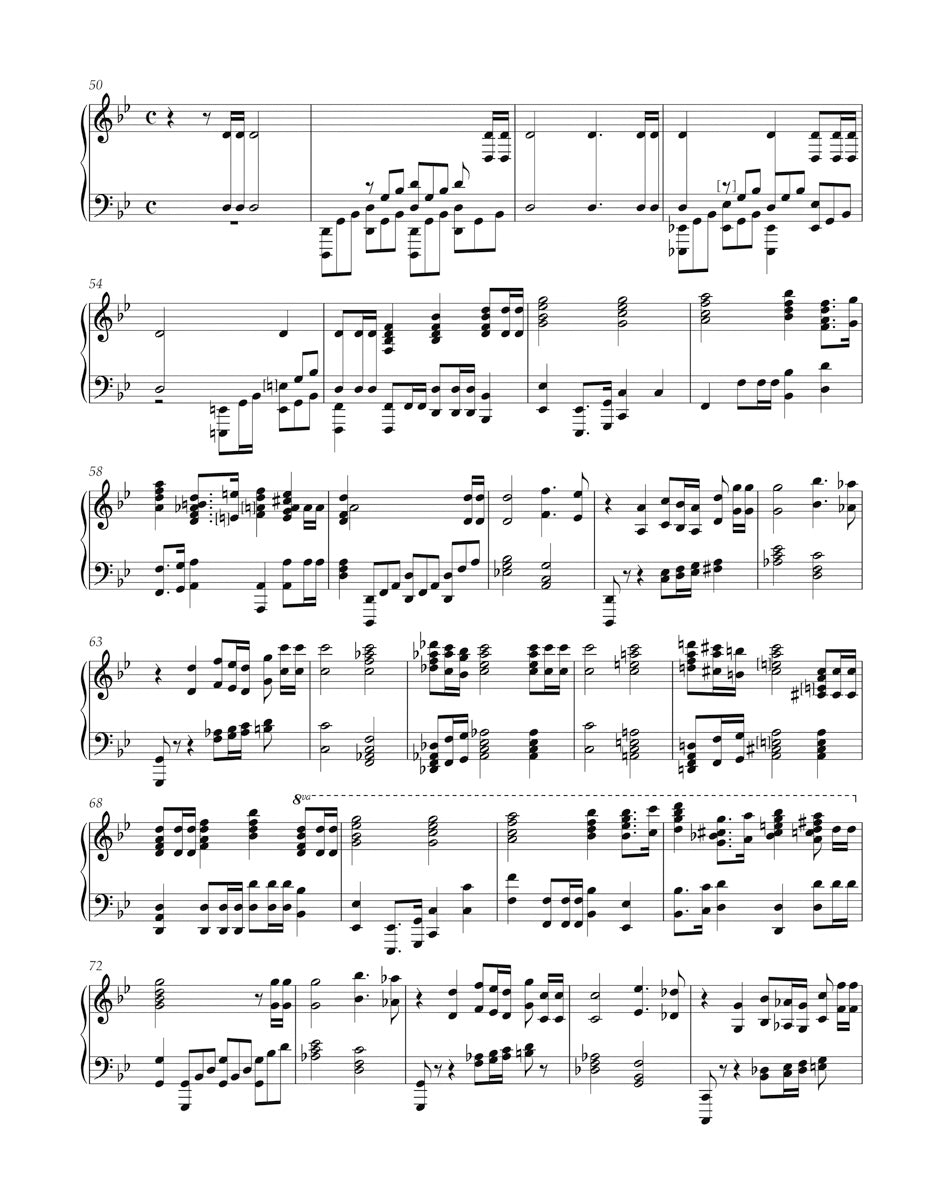Smetana: Macbeth for Piano
In stock and typically ships within 1 business day.
- Composer: Bedřich Smetana (1824-1884)
- Editor: Jarmila Gabrielová
- Instrumentation: Piano
- Work: Macbeth (Macbeth and the Witches), JB 1:75
- ISMN:
- Size: 9.6 x 12.2 inches
- Pages: 15
- Urtext / Critical Edition
Description
Smetana's piano sketch Macbeth, also known as Macbeth and the Witches, after William Shakespeare's tragedy, originated in 1859 while the composer was living in Sweden. Some scholars believe that it was meant to be scored for full orchestra.The work's dark and gloomy mood is connected with the death of Smetana's wife Katharina on 19 April 1859. Macbeth only appeared in print posthumously in 1912. It soon entered the piano repertoire, and in the course of the 20th century it was scored for orchestra by Otakar Jeremiáš and for piano and orchestra by Jarmil Burghauser.
This Urtext edition proceeds from the only surviving source, Smetana's pencil sketch. The editor has added as little as possible to the musical text in order to faithfully recreate the challenge of performing a sketch. Missing rests and rhythmic ‘anomalies' have been left as in the autograph.
This edition replaces the older H7322.
Publishers use a lot of words to describe what they sell, and we know it can be confusing. We've tried to be as clear as possible to make sure you get exactly what you are looking for. Below are descriptions of the terms that we use to describe the various formats that music often comes in.
Choral Score
A score for vocalists that only contains the vocal lines. The instrumental parts are not there for reference. Generally, cheaper than a vocal score and requires multiple copies for purchase.
Facsimile
Reproductions of the original hand-written scores from the composer.
Full Score
For ensemble music, this indicates that the edition contains all parts on a single system (there are not separate parts for each player). In larger ensembles, this is for the conductor.
Hardcover
Hardbound. Generally either linen-covered or half-leather.
Orchestral Parts
Similar to a wind set, this is a collection of parts. In the case of strings, the numbers listed are the number of copies included, though generally these are available individually (often with minimum quantities required).
Paperback
When publishers offer multiple bindings (e.g. hardcover) or study scores, this is the "standard" version. If you're planning to play the music, this is probably what you want.
Performance / Playing Score
A score of the music containing all parts on one system, intended for players to share. There are not separate parts for each player.
Set of Parts
For ensemble music, this indicates that there are separate individual parts for each player.
Solo Part with Piano Reduction
For solo pieces with orchestra, this is a version that contains a piano reduction of the orchestra parts. For piano pieces, two copies are typically needed for performance.
Study Score
A small (think choral size) copy of the complete score meant for studying, and not playing. They make great add-ons when learning concertos and small chamber works.
Vocal Score
A score prepared for vocalists that includes the piano/organ part or a reduction of the instrumental parts.
Wind Set
For orchestral music, this is a collection of wind and percussion parts. The specific quantities of each instrument are notated.
With Audio
In addition to the printed music, the edition contains recordings of the pieces. This may be an included CD, or access to files on the internet.
With / Without Fingering (Markings)
Some publishers prepare two copies - a pure Urtext edition that includes no fingering (or bowing) suggestions and a lightly edited version that includes a minimal number of editorial markings.





